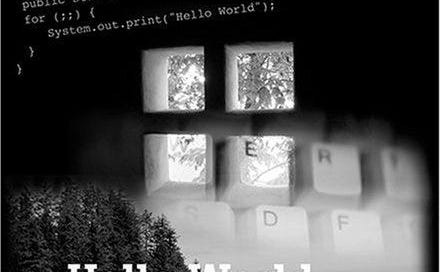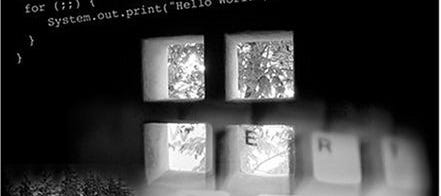Thinking about Gaston Bachelard and the poetics of the network (2004)
An excerpt from 'Hello World: Travels in Virtuality' by Sue Thomas (2004)
Introduction
In the decade from 1995-2005 I was obsessed with understanding what was happening when I logged onto the internet - or was it ‘into’ the internet? Where was I? Who was I? Who were those other people typing into the dark? In last week’s piece about LambdaMOO I gave a sense of how crazy it could feel, but that’s an extreme example. On a day-to-day basis, being online felt more like living in another dimension. One that was parallel to what we called ‘the flesh’ world, but very very different. Was it a place? I couldn’t figure it out. Looking back, I can see I was manufacturing much of the intensity myself, but it didn’t seem like that then; it was such a heady experience.
I tried to write a novel about it but it was too unbelievable. In the late 1990s my agent showed it around but reported back that there was no interest. At least two editors told her that the idea of anyone falling in love on the internet was laughable. At this time very few publishing houses were online and the World Wide Web was generally regarded as some kind of computer silliness that would soon pass. The literary world was especially dismissive. That manuscript is still under my bed.
On one occasion I was invited to talk about digital writing on the flagship BBC Radio arts programme Front Row. The presenter, Mark Lawson, asked me what a hyperlink was but soon interrupted my explanation with a derisive sneer: “You’ve lost me already!” It was a brief conversation. But that’s how it was then. You couldn’t blame people who had never dipped a toe into the waters of cyberspace. They just had no idea.
Anyway, I decided to give up on my novel and write a nonfiction account of cyberspace instead. It would be a personal memoir of my travels in virtuality. At the time I was travelling physically too and I worked on it whilst crossing Australia by train, wandering around Southern California and journeying in Europe. The result was Hello World: Travels in Virtuality, published in 2004 by Raw Nerve Press whose fearless editor Ann Kaloski had also trodden the cyber-path and understood the terrain.
So here’s a chapter from Hello World in which I use Gaston Bachelard’s ‘The Poetics of Space’ to help me think about the geography of the internet. I hope you like it. Please feel free to add your own thoughts and memories in the comments. I’d love to read them.
Chapter 5 of Hello World: travels in virtuality, Sue Thomas, Raw Nerve Books, 2004.
All really inhabited space bears the essence of the notion of home . . . the sheltered being gives perceptible limits to his shelter. He experiences the house in its reality and in its virtuality, by means of thought and dreams. Gaston Bachelard, The Poetics of Space (1958)
In The Poetics of Space, Gaston Bachelard wrote that ‘all really inhabited space bears the essence of the notion of home’. He described the interior spaces of the house — the attic, the cellar, the stairs — and the small spaces contained within it — drawers, chests and wardrobes; nooks and corners and cracks, writing ‘Our house is our corner of the world. As has often been said, it is our first universe, a real cosmos in every sense of the word’.
When the book was published in 1958, Bachelard was seventy-four years old. A year earlier, the Russian dog, Laika, had travelled on Sputnik 2 for seven days, and in 1961, a year before Bachelard died, Yuri Gagarin would make the first successful orbit of the Earth and return safely to the planet.
With Gagarin’s historic journey, our notions of space and the cosmos were changed for ever. Today space has grown even bigger because the coming of the internet has stretched it to mean the area covered by anything which can communicate with anything else, so that the most distant interstellar probe is as hooked into the web as the child in her classroom, and the geography they mutually inhabit is more related than we could ever have imagined.
Today we carry ‘our corner of the world’ with us wherever we go, and many of us have adapted to a life where we are seldom established permanently in one physical place. An email address has more permanence than the name of a street or building. So now we need a new book, The Poetics of the Network. Perhaps, indeed, this is that book.
The Poetics of the Network would use a different set of metaphors, in which nooks are exchanged for hubs; staircases for satellites, cellars for databases. We have an alternative mental geography now. The notion of an interconnectedness of all things has become an accepted conceptual framework for ecology, society, culture — even economics and politics.* It seems that in our interconnected, technologised and information-rich world there is no longer such a need for ‘the house’ in its physical sense, since so much of that world now is miniature and portable. We are learning to be nomads again. The objects we own are foldable, replaceable or disposable. If they take up too much room, we can throw them away and buy exact replicas somewhere else. Some belongings don’t even have a material physicality — they are simply uploadable. We don’t need to store or carry them — the internet does it for us.
Bachelard writes of ‘the hiding places in which human beings, great dreamers of locks, keep or hide their secrets’. For dreamers of locks, read dreamers of passwords. His drawers, chests and wardrobes, beautifully carved and handed down through generations, have become servers and databases which we will never see, kept in locations we will never visit. Our money is in banks. Our memory is in digital media.
And Bachelard has something to say about miniaturism too — although we must remember that he was writing just before the golden age of the miniature came into being via the development of transistors, later to be followed by microchips. For Bachelard, thinking of psychology rather than technology, the miniature is generally also the non-functional, a small fantasy of the real thing. He declares ‘One might say that these houses in miniature [written by authors] are false objects that possess a true psychological objectivity’. But today the miniature is not a false object. It is commonplace in our lives and necessary to our industries. It functions as well as, if not even better than, the large.
However, despite the fact that some of Bachelard’s images now carry a different iconicity, they continue to possess a powerful currency, only today they are less actual and more virtual than he might have expected them to be. His array of physical concepts — shells, nests etc — have moved even further away from tangibility and we now accept that ‘space’ is relative and that the ‘house’ may be inappropriate for our current needs. This may seem too literal an observation, but it’s worthy of mention because technology has not diminished but enlarged our conceptual mental libraries. Hidden places, secrets, comfort, security and protection do indeed remain potent images for us today — it’s just that we find some of them in places other than the built house with all its furniture. Significant personal artefacts today are more likely to be mobile phones, filofaxes, PDAs, briefcases, even the interiors of our cars. Places which hold the mix of flesh and digital fragments making up who we are. And for many of us the house has been replaced by the car or the office, while the domestic base itself has become the place least visited and perhaps used only for sleep.
And of course computers have these hidden places too. The hard drive contains hundreds of compartments where we can hide data from each other, although sometimes these things are not quite so hidden as we think they are. For example, if you share your pc with others and you want to know which sites they have visited, just check out the cache. Do Start > Programs > Windows Explorer > Windows > Temporary Internet Files and take a look. You’ll find cookies in there, which send information back to sites visited by that particular browser, plus all kinds of other interesting files. Cookies are a nuisance but they can be handy too, since they make it much easier to return to websites requiring your password, but there’s no denying that their prime purpose is to gather data about you and pass it back to somebody somewhere. And almost always there is money involved at some point down the line.
As a child, I used to love making secret dens. I would burrow into ruined buildings, wander into sandy caves, make benders with saplings, adopt a small piece of territory for my own and sometimes maybe share it with the other kids. And you can build dens indoors too — there is nothing better on a rainy day than to stretch a sheet across the gap between two beds, weight the edges with books, and then crawl inside the resulting hideaway to lie on your back and gaze at the thin cotton roof above. As adults we do it with camping, lying in our sleeping bags on lumpy ground and being bitten by mosquitoes as the rain patters on the canvas over our heads. Or by inhaling the wonderful warm smell of sun on the fabric of the tent.
My computer is a private den which I enter with a secret password, and within it are more doorways and more passwords through which I progress a section at a time, some leading me deeper inside the machine, others taking me out onto the web and then guiding me through other doors in places I will never physically visit. But inside the secret caverns of my computer everything is arranged to suit. I enter its miniature but hugely spacious universe and in doing so I enter myself.
Bachelard would recognise this as the intimate immensity of daydreams and the imagination. He likens it to entering a forest: ‘We do not have to be long in the woods to experience the always rather anxious impression of going deeper and deeper into a limitless world. Soon, if we do not know where we are going, we no longer know where we are’.
* Indeed, research has demonstrated that the web itself is already highly interconnected. Albert-Laszlo Barabasi of the University of Notre Dame found that any two random pages are, on average, just 19 mouse clicks away from each other. ‘The WWW is very big but not very wide’. BBC Online Network 10 Sept 1999 http://news.bbc.co.uk/1/hi/sci/tech/443754.stm
About Hello World: Travels in Virtuality
‘This is a book about a love affair. It’s also a meditation on a phenomenon that has changed not just our lives but our perceptions of ourselves.’ Christina Patterson, The Independent.
‘An essential tour guide to the poetics of time, space and gender in the Information Age. This book is quite simply a Baedeker to the cyber-realm.’ Carolyn Guertin, new media critic.




